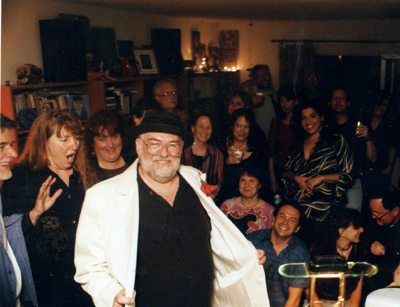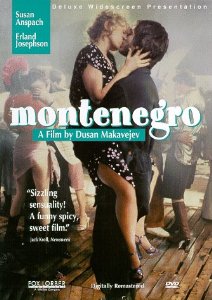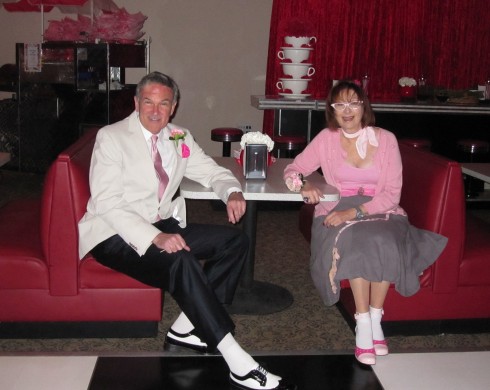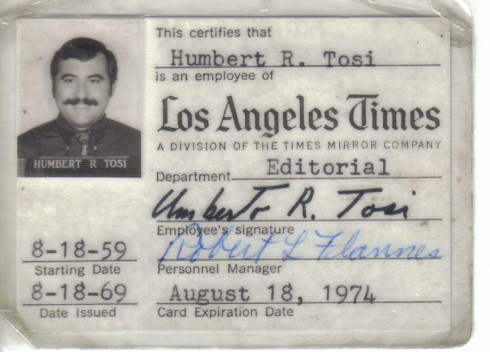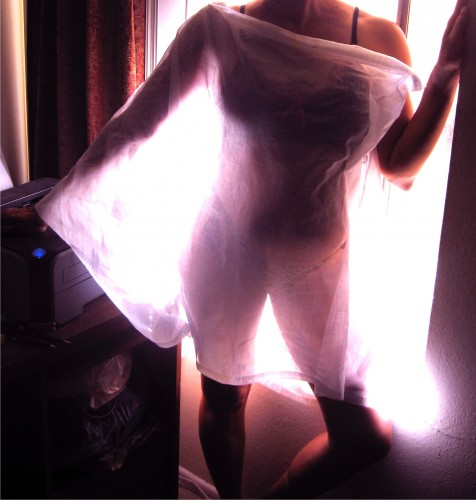My Friend Boyd Lewis Took My Picture At A Birthday Party in 2001
LIONEL ROLFE IN HIS WHITE SUIT AT HIS BIRTHDAY PARTY
How Meeting Susan Anspach Completed The Circle
Goodnight moon.
Goodnight room.
Goodnight Lionel in the room.
—-Susan Anspach
By LIONEL ROLFE
I met her at a Thanksgiving party in 2012. Karen Kaye, the sister of avant garde film maker Stanton Kaye, had been throwing the parties for years at her Echo Park home. Back in 1971, Stan made a film called “Brandy in the Wilderness,” which created a large buzz among local bohemians. The bohemian scene was particularly vibrant around Los Angeles City College and a lot of us who gathered at Karen’s were the core of Hollywood bohemianism. Sometimes new faces would appear. I liked going to Karen’s parties because many of the people who went there were some of the greatest eccentrics of the era.
That’s how I met Susan Anspach.
She was as eccentric as any of us. Karen died in 2009 but her niece
Samantha kept the tradition going. Normally I’m a bit jaded when I
meet new folks, but Susan was of a different sort. When my eyes
lighted on this woman, I knew she was some kind of special lady. No
wonder I couldn’t describe her easily. I had spotted her sitting
demurely behind a dining room table and couldn’t take my eyes off
her. I couldn’t decide if she was an older biker chick or a slightly
faded apparition of a formerly grand lady. Was she in her early 40s
or early 60s? I finally determined she was an older woman who wore
her years well. I felt like I should know her name, but I didn’t. I knew
I had known her in some past life, but when? I just kept staring,
before I asked her some sort of awkward question. Read more
A LONG HISTORY OF DODGING THE DANCE FLOOR SHUFFLE
By Bob Vickrey
Just ask any woman in America, and she will assure you that she has a better chance of talking her man into joining her knitting club than trying to coax him onto any dance floor.
The subject of dancing came up recently while attending a local wedding. It was a casual backyard affair, and of course, there was the dreaded dance floor in the corner of the yard that offered one more chance for public humiliation. I could already envision being dragged onto the floor against my will by some woman at my table who wished to unleash her inhibitions for one evening at the expense of those of us who preferred to remain happily inhibited.
The occasion took me back to high school days at the Friday night dances at the local community center. For shy boys like me, the notion of hanging out with cute girls with whom I shared classes was both exhilarating and terrifying at the same time. I usually found a convenient hiding spot behind two friends where I could observe the dance floor, but also stay out of the direct line of fire.
“Our Own Kind” by Umberto Tosi
The story takes place in Los. Angeles between the assassinations of MLK and RFK. But is is PURELY fiction. a RUMINATION. The author, Umberto Tosi, modeled characters, situations and events on experiences — personal and professional — during his decade as a writer and editor at the Los Angeles Time during the 1960s and early 70s.
It’s not an attempt at expose, or investigation, more a musing on personal vectors with history, the inner reverberations and considerations experiences by — after all — ordinary people surviving near the ground zero of social and political tragedy and cataclysm, and the interplay of race and culture with same.
Boryanabooks will serialize the book over the next several issues.
Umberto Tosi (aka Nino Tosi) Then and Now
by Umberto Tosi
Copyright©2012 by Umberto Tosi
– all rights reserved
1. RED ALL OVER
Damn florescent lights keep flickering, just like the one over his desk back at the Times. All this white could make him invisible. Bleached walls, tiles, curtains, bedding, pale as his ghostly face, set off against his black silky Sy Devore shirt and the dark droplets of blood peeking from her bandages that worry him. Air conditioning blows soundlessly from vents above, morgue-cold in this sterile space, once removed from the smoggy heat of this June morning in Los Angeles. This summer, not of love, 1968, will be very long.
Makeda’s monitor beeps in reassuring syncopation with the wheezy snores of a curtained-off roommate. A muted TV oozes soap opera from high on a wall opposite her bed. Makeda hates TV, and would loathe that her picture – a dated, inappropriately smiling high school yearbook shot – keeps showing up on network news, and in the papers, though only below the fold now. Read more
The Myths We Live By
The Silence of Animals: On Progress and Other Modern Myths. John Gray. New York: Farrar, Straus and Giroux, 2013, 225 pp.
Leslie Evans
John Gray, 66, emeritus professor of philosophy at Oxford, is the great pessimist of Western intellectuals, the self-conscious inheritor of Schopenhauer. He has been all over the political map, from youthful leftism to Thatcherism in middle age, to New Labour and a current commitment to environmentalism. He is also a principal interpreter of British Jewish social theorist Isaiah Berlin, who was a staunch defender of liberal values against authoritarian currents, and, in consequence, a critic of the negative side of the Enlightenment, its spawning of schemes of generic social engineering to improve humanity by imposing Reason on the world, usually at terrible human cost.
This little book is unusual in Gray’s oeuvre. It is not a linear exposition but a series of comments on brief excerpts from novels and poems; works of nonfiction such as The Peregrine, an account of a year in the life of a Peregrine falcon; interspersed with an essay on Freud containing a sidebar on Jung. If there is a common theme it is that despite our technological prowess we humans are animals like all the others, not some special creation, with our animal nature unchanged since it evolved 50,000 years ago, all attempts to improve it to the contrary notwithstanding.
The myth that we are perfecting ourselves, central to the liberal ethos since the French Revolution, and which was in turn inherited from the Christianity of St. Paul, is Gray’s target:
“History may be a succession of absurdities, tragedies and crimes; but – everyone insists -the future can still be better than anything in the past. To give up this hope would induce a state of despair.” Read more
Les Zador Crunches Some Numbers
By LES ZADOR
I did some numbers.
There are 60 seconds in a minute;
There are 3,600 (60 x 60) seconds in an hour;
and 86,400 (60 x 60 x 24) seconds in a day;
and 31,536,000 (60 x 60 x 24 x 365) seconds in a year; and
and 2,832,240,000 seconds (60 x 60 x 24 x 365 x 90) in a 90-year life span (a long life-time).
If there are 400,000,000,000 stars in the Milky Way, you would divide the 400 billion by 2,832,240,000 to get the number of people it would take to count all of those stars if they began their count from the instant of birth and continued without interruption (for sleep, eating, going to the bathroom, or observing religious holidays) to the instant of death (all on their 90th birthdays) while counting at the rate of one star per second. It comes out to 141.23 persons.
With the Milky Way being an average-sized galaxy and with an estimated 100 billion (100,000,000,000) galaxies in the universe, it would take 14,123,000,000,000 (141.23 x 100,000,000,000) persons–that’s over 14 trillion human beings–90 years while counting at the rate of one star per second and going at it 24 hours per day (with no time off for weekends, legal holidays, fornication, or anything else) for the entire 90 year duration to count every star in every galaxy in the universe. That’s more people who have ever lived on earth since humankind first came into existence and in all likelihood more people than ever will haved lived on earth before the species says its final “adios, amigos.”
Ours is a minor planet orbiting around a slightly smaller than average star located in an average-size galaxy. With 400 billion stars in the Milky Way, and 100 billion galaxies, the total number of stars in the universe could reasonably be estimated as: 100 billion x 400 billion . . . or . . . 40,000,000,000,000,000,000,000, of which one of them is our own sun. The sun has eight planets orbiting around it. Assuming that eight planets is the norm–a not unreasonably assumption–then the total number of planets could be estimated at 320,000,000,000,000,000,000,000.
All of which explains one of the reasons why some have questioned the existence of an interventionist God who, having singled out this planet and our species for some unfathonable reason, holds the doings of humankind on our world of paramount concern.
*
Les Zador is an attorney in Encino, among other things.
Mary Reinholz’ “Exit From Eden” Returns After Too Long A Lull
CHAPTER 14
Doria Nune was somebody I wanted to know better even before my interview with her began for the New York Daily Bugle. The girl intrigued me–and not just because she was about to publish an avant garde women’s magazine called Pink that would debut as an erotic art book with male centerfolds looking like Renaissance nudes. She seemed to embody the eternal gamine, an elfin and androgynous presence.
Decked out in form fitting suede pants and a cream colored silk blouse that showed only a hint of cleavage, she greeted me at the door of her Chelsea Hotel suite with an enigmatic smile. “So we’re neighbors and also in a similar racket,” she said. “It’s nice to know there’s another feminist I can talk to in this dump.”
Doria couldn’t have been more than five feet two inches tall. She had cut her dark brown hair short since we last spoke at a meeting of Media Women Ink, the feminist writers group on the Upper East Side, and the new style became her. It was a pixie cut which brought out her delicate cheek bones and hazel eyes.
Her space also impressed me. She had so much more of it than my cramped Chelsea quarters that waning year of 1970. She had painted most of it a dusky rose, presumably the same color that would seep into the pages of Pink when it appeared on newsstands in February.
“This is really nice,” I said. “Elegant. How did you get so much room?
“I had a wall knocked out and liberated the room next door,” Doria said briskly. “The hotel manager didn’t seem to mind—I paid him enough. But I had a ceiling collapse recently. The transsexual musician above me keeps letting his bathwater flood over and down to my place. It’s a pain in the tush.” Read more
Honey begins a three-part series on Helen Hunt Jackson
NOTES FROM ABOVE GROUND
By Honey van Blossom
(Honey is a Belgian Marxist former strip-tease artiste)
During the Victorian era on the east coast of the United States, the terrible voluminous roar of skirts worn over stockings, drawers, chemises, corsets strengthened with steel or whalebone, over as well the flexible cages of steel that supported the skirts and the layers of petticoats filled the rooms of houses.
The “angel in the house” ideal for Victorian women represented the ideology of gender: men dominated work outside the home and owned the political and legal system. Women were to raise virtuous children. Women were to be pure.
East coast privileged girls learned reading, writing and arithmetic but most people believed “important subjects” such as Latin, Greek or higher mathematics overtaxed women whose reasoning powers were too defective for such “masculine mysteries.”
Out of this white upper class female domestic milieu stepped a fleshy, very short upper middle class white woman writer with an unusually assured and balanced expression born Helen Maria Fiske in 1830 in Massachusetts. Read more

